A long-awaited sunny day in a stretch of warm but cloudy weather. In the traditional Asian almanac, these are the last days when farmers have to worry about damaging nighttime frosts. For a satoyama naturalist, it’s time to pull the trusty insect nets out from the back of the closet. Foldable nets with telescoping poles are ideal for carrying along on countryside hikes and bike rides.
Today I’m walking out to the Kechienji Temple, on the very outskirts of Chiba NT. According to local sources, this Shingon sect temple was founded by the famous monk Gyoki during the Nara Period, sometime between 724 and 729. The temple’s treasure, a 47 cm high, standing bronze statue of the Buddhist wisdom king Fudo Myo O, is believed to have been cast in 1303, and has been designated a National Cultural Property.

The temple is located at the head of a narrow valley, where water naturally seeps out of the surrounding slopes. Just across from the temple, on top of the high ground and reached by a set of short but steep stairs, is the Kumano Jinja Shrine, the guardian shrine of Kechienji Village. At the base of the steps is a tameike style irrigation pond, historically used to temporarily store the seep water for sending downstream to the valley floor rice paddies. In the pond is a small island, reached by a bridge, on which a Suijin-sama or ‘water spirit’ is venerated.
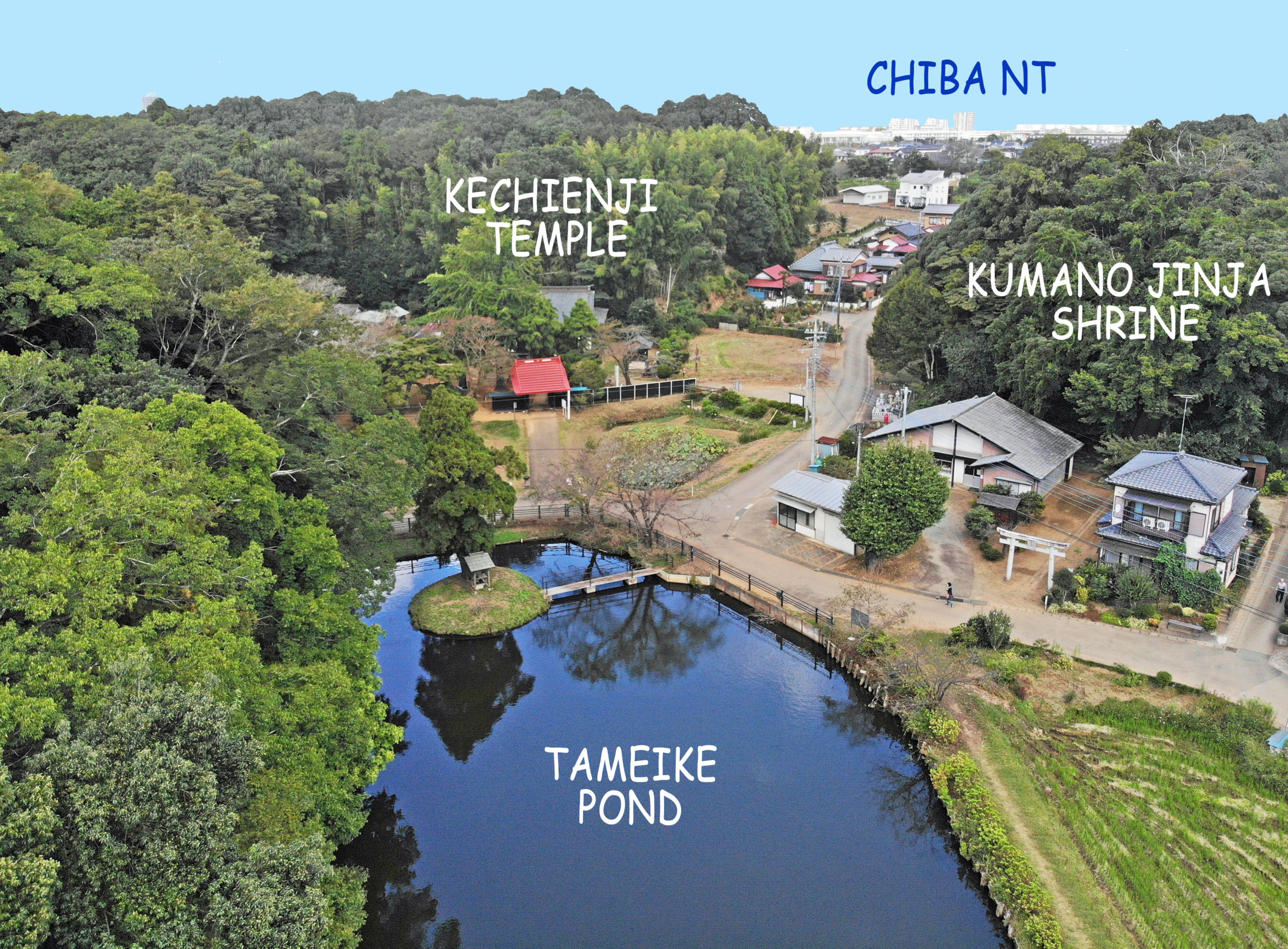
Surrounding the shrine and temple are dozens of stone statues dedicated to various local folk beliefs. The whole area is also the stage for fascinating legends concerning the famous 12th century poet and samurai Minamaoto no Yorimasa, whose head and faithful horse are said to be buried nearby. In 2008, Kechienji was chosen as one of Japan’s Best 100 Villages by the Asahi Shinbun newspaper and the Forest Culture Association. The report cited yatsu valley rice paddies, slope woodlands, sacred irrigation pond, sacred grove, and other typical satoyama countryside features, all on the outskirts of the Tokyo metropolitan area.
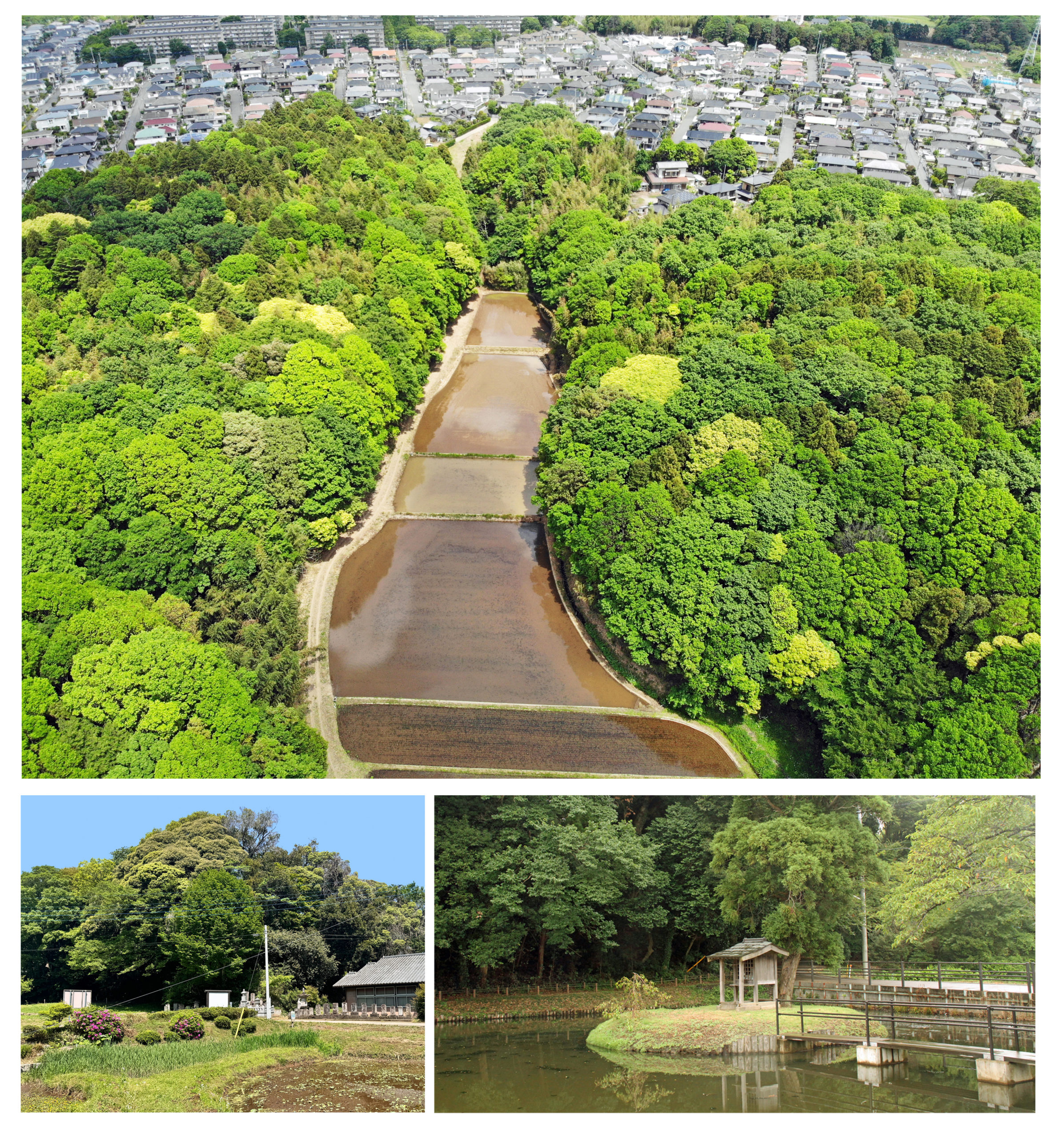
But my purpose today has nothing to do with history or folklore. Today I’m only here for the dragonflies. Dragonflies and their close cousins the damselflies are classified in the insect order Odonata. They are considered one of the oldest insect lineages, with roots that go back into the Triassic Period, more than 200,000 years ago. They are exclusively predatory, and can maneuver at high speed like miniature fighter jets.
The tameike sacred irrigation pond, as well as several other smaller lotus and water lily ponds fronting the temple, are ideal hunting and spawning habitat for various species of dragonfly. Among the best known of these is the shiokara-tombo or common skimmer (Orthetrum albistylum). The Japanese name means ‘salty dragonfly’, and refers to the whitish powder that covers the insects’ bodies. This powder is thought to deflect UV radiation. Although I’ve never tried it myself, some researchers have actually licked these dragonflies and determined that they are definitely not salty!
The mature males are blueish grey towards the head and black towards the tail. The tip of the abdomen is white, and the huge compound eyes are dark green. Mature females are straw colored, and are commonly referred to as mugiwara-tombo. or ‘wheat-straw dragonfly’. Many people mistakenly believe them to be a separate species!
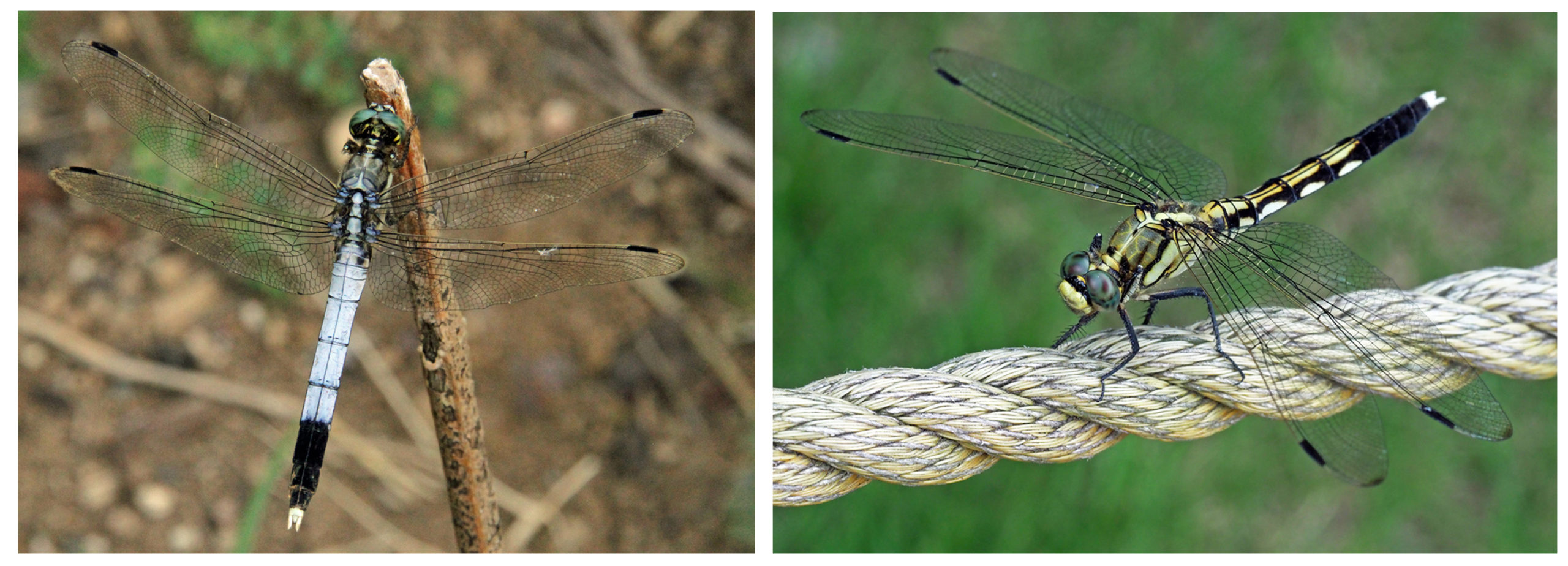
There are also individuals that seem to be intermediate between male and female. These are very young males. Right after metamorphosing the males are the same color as the females, and it takes them about a week or so to achieve their characteristic blueish gray color. With any species of dragonfly or damselfly, the sex can be easily determined by inspecting the base of the abdomen, just behind the thorax. If there is a sort of protuberance sticking out downwards, then the individual is a male. If not, it is a female. This protuberance marks the male’s secondary (accessory) genitalia. Dragonfly males produce sperm in the primary genitalia near the tip of the abdomen, but then twist their bodies into a circle and transfer the sperm to the secondary genitals.
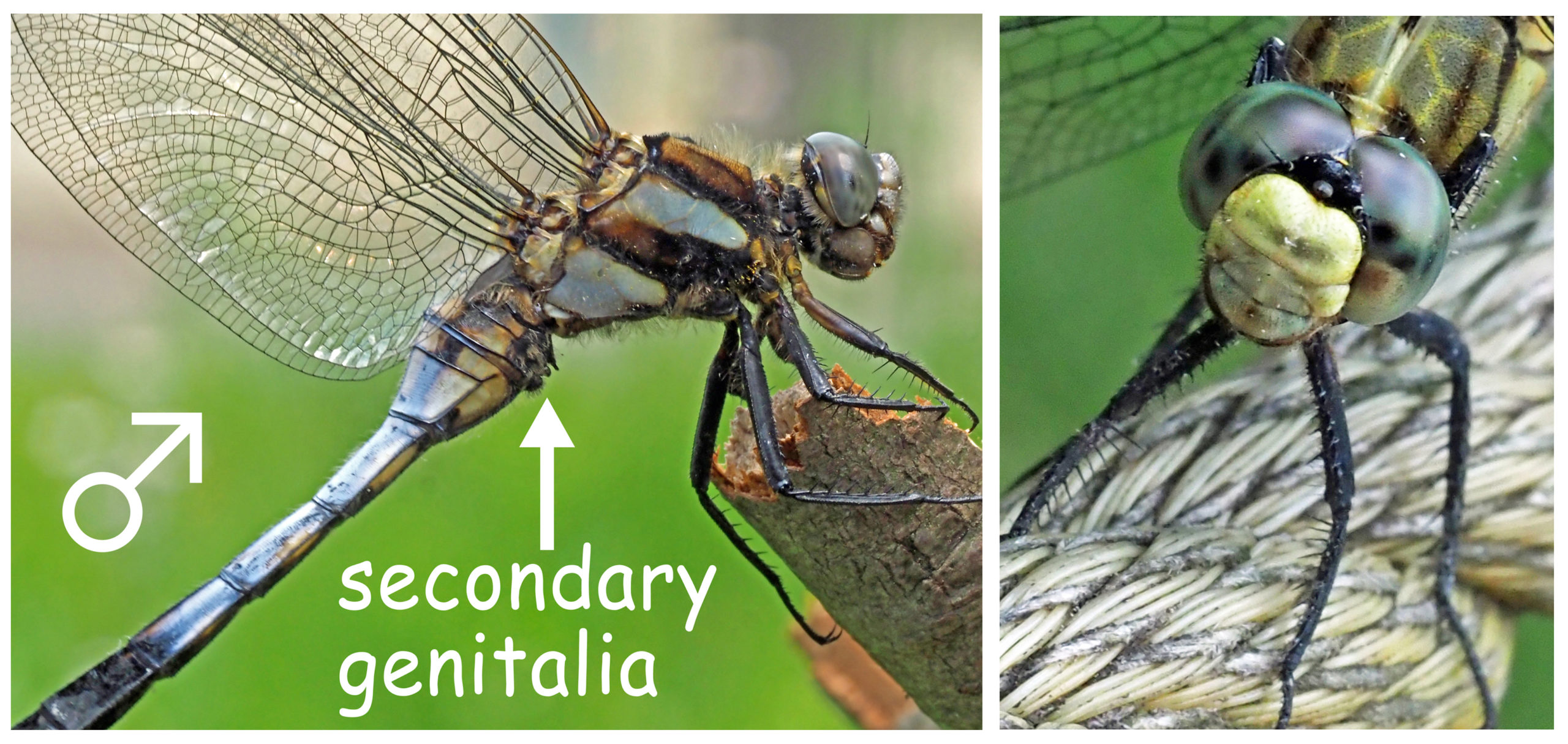
Many people would be perfectly content just watching the dragonflies’ incredible aerobatic displays. And this, of course, is a fine way to enjoy them. Binoculars can also come in handy. Everyone has their own favorite style of relating to the natural world. But a naturalist would quickly notice that some of the male dragonflies have black, rather than green, eyes; and the blueish grey color extends unbroken all the way to the tip of their abdomen. Also, some females are clearly s deeper shade of yellow than the mugiwara-tombo. These individuals belong to a closely related but separate species that also hunts and breeds here, the shioya-tombo or Japanese skimmer (Orthetrum japonicum).
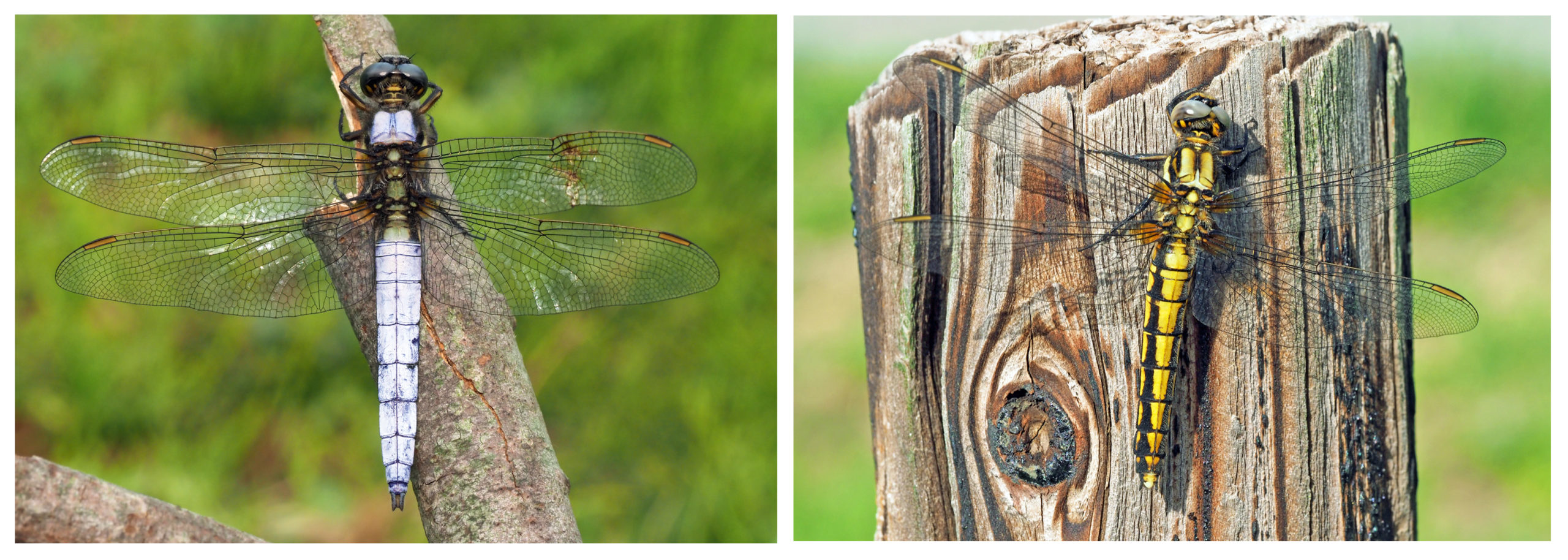
The common skipper is widely distributed throughout East Asia, but the shioya-tombo is endemic to Japan. With a little practice the two species can readily be distinguished by color at a distance. For those who really like close-up nature observation, net a few individuals and check out the small solid rectangular section located towards the tip on the leading edge of each wing. This is called a pterostigma, and is thought to help stabilize an insect’s wings in flight or when gliding. The common skimmer’s pterostigma is black, while that of the Japanese skimmer is yellow.
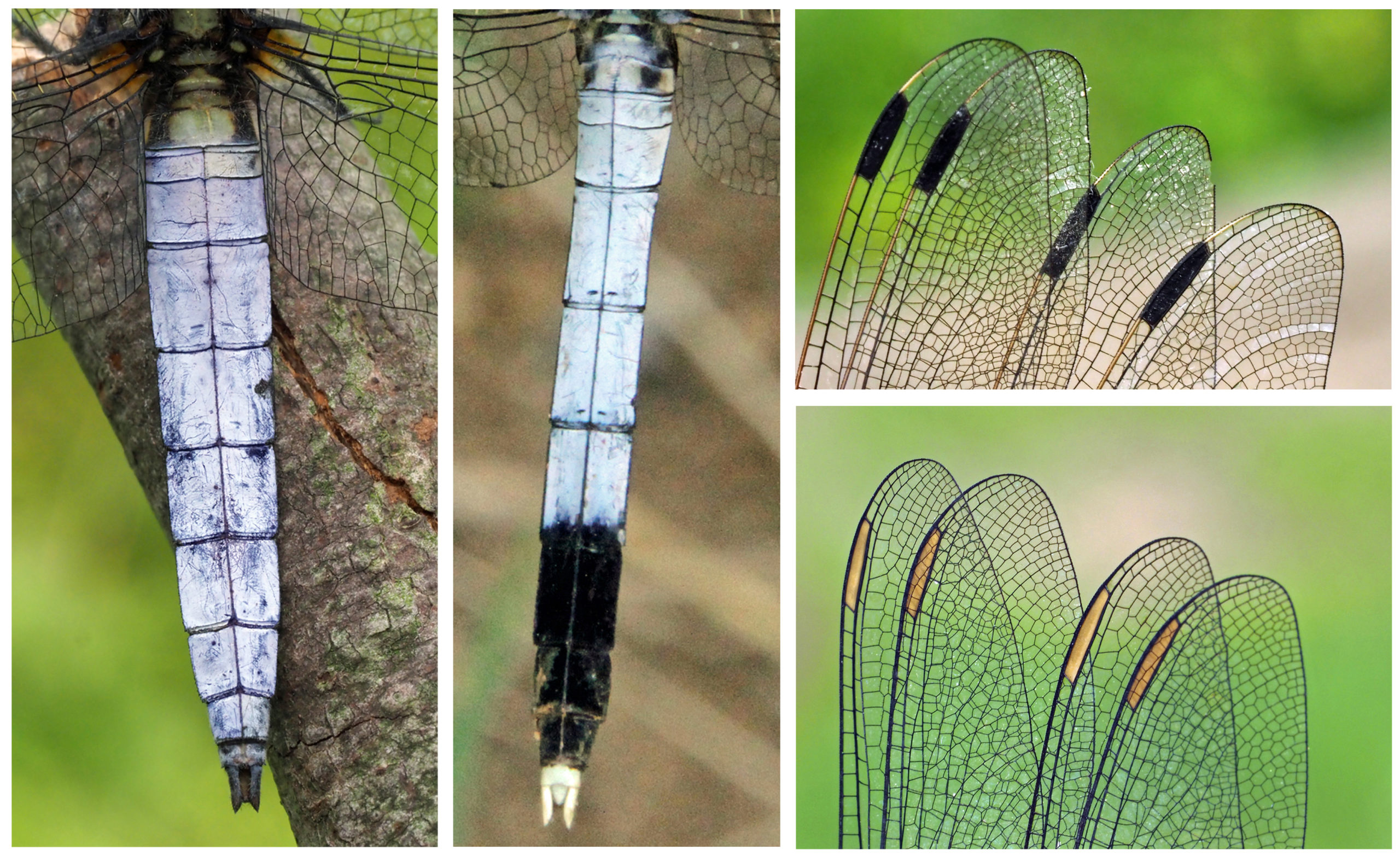
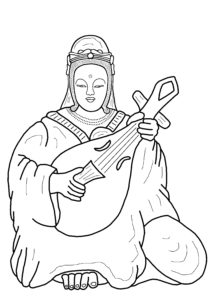 The Suijin, or ‘Water Spirit’ revered at the Kechienji tameike pond is Benzaiten, a Buddhist goddess often depicted playing a biwa lute. In addition to presiding over sacred irrigation ponds, she is also considered to be a special guardian of music, acting, and speaking; and is one of the Seven Lucky Gods venerated on popular pilgrimages undertaken during the New Year season. Although Benzaiten is a Buddhist deity, the shrine here is tended in Shinto fashion. Similar sacred irrigation ponds with Benzaiten shrines can be found all over the Hokuso rice paddy countryside. The world famous Shinobazu Pond at Ueno Pond is also arranged in similar fashion, with Benzaiten venerated at a temple on an island in the center of the pond. At left is a simple line sketch of the stone Benzaiten statue enshrined here.
The Suijin, or ‘Water Spirit’ revered at the Kechienji tameike pond is Benzaiten, a Buddhist goddess often depicted playing a biwa lute. In addition to presiding over sacred irrigation ponds, she is also considered to be a special guardian of music, acting, and speaking; and is one of the Seven Lucky Gods venerated on popular pilgrimages undertaken during the New Year season. Although Benzaiten is a Buddhist deity, the shrine here is tended in Shinto fashion. Similar sacred irrigation ponds with Benzaiten shrines can be found all over the Hokuso rice paddy countryside. The world famous Shinobazu Pond at Ueno Pond is also arranged in similar fashion, with Benzaiten venerated at a temple on an island in the center of the pond. At left is a simple line sketch of the stone Benzaiten statue enshrined here.
 Kechienji Temple is located east of Chiba NT Chuo Station. The shortest walking distance is about 3km each way. Bus service from the station to the Takabana Danchi Iriguchi bus stop is available, but the schedule is not very convenient. Parking spaces around the temple are severely limited, and the roads are too narrow to park on without disrupting the farmer’s work.
Kechienji Temple is located east of Chiba NT Chuo Station. The shortest walking distance is about 3km each way. Bus service from the station to the Takabana Danchi Iriguchi bus stop is available, but the schedule is not very convenient. Parking spaces around the temple are severely limited, and the roads are too narrow to park on without disrupting the farmer’s work.
The formal place name is Ketsuenji, but the temple is always called Kechienji, as the word ‘ketsu’ can also mean ‘buttocks’! – a bit gross for a beautiful Buddhist temple!
The route from the station crosses a bridge over the big pond in Hokuso Hana no Oka Park. A substantial heron, egret and cormorant breeding colony can be observed from the southern side of the bridge.
